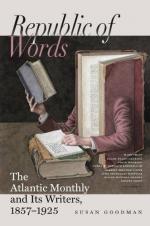Of the capture or escape of most of that small band who met with Nat Turner in the woods upon the Travis plantation little can now be known. All appear among the list of convicted, except Henry and Will. General Moore, who occasionally figures as second in command, in the newspaper narratives of that day, was probably the Hark or Hercules before mentioned; as no other of the confederates had belonged to Mrs. Travis, or would have been likely to bear her previous name of Moore. As usual, the newspapers state that most, if not all the slaves, were “the property of kind and indulgent masters.” Whether in any case they were also the sons of those masters is a point ignored; but from the fact that three out of the seven were at first reported as being white men by several different witnesses,—the whole number being correctly given, and the statement therefore probably authentic,—one must suppose that there was an admixture of patrician blood in some of these conspirators.
The subordinate insurgents sought safety as they could. A free colored man, named Will Artist, shot himself in the woods, where his hat was found on a stake and his pistol lying by him; another was found drowned; others were traced to the Dismal Swamp; others returned to their homes, and tried to conceal their share in the insurrection, assuring their masters that they had been forced, against their will, to join,—the usual defence in such cases. The number shot down at random must, by all accounts, have amounted to many hundreds, but it is past all human registration now. The number who had a formal trial, such as it was, is officially stated at fifty-five; of these, seventeen were convicted and hanged, twelve convicted and transported, twenty acquitted, and four free colored men sent on for further trial and finally acquitted. “Not one of those known to be concerned escaped.” Of those executed, one only was a woman: “Lucy, slave of John T. Barrow”: that is all her epitaph, shorter even than that of Wordsworth’s more famous Lucy;—but whether this one was old or young, pure or wicked, lovely or repulsive, octroon or negro, a Cassy, an Emily, or a Topsy, no information appears; she was a woman, she was a slave, and she died.
There is one touching story, in connection with these terrible retaliations, which rests on good authority, that of the Rev. M.B. Cox, a Liberian missionary, then in Virginia. In the hunt which followed the massacre, a slaveholder went into the woods, accompanied by a faithful slave, who had been the means of saving his life during the insurrection. When they had reached a retired place in the forest, the man handed his gun to his master, informing him that he could not live a slave any longer, and requesting him either to free him or shoot him on the spot. The master took the gun, in some trepidation, levelled it at the faithful negro, and shot him through the heart. It is probable that this slaveholder was a Dr. Blunt,—his being the only plantation where the slaves were reported as thus defending their masters. “If this be true,” said the “Richmond Enquirer,” when it first narrated this instance of loyalty, “great will be the desert of these noble minded Africans.” This “noble-minded African,” at least, estimated his own desert at a high standard: he demanded freedom,—and obtained it.




